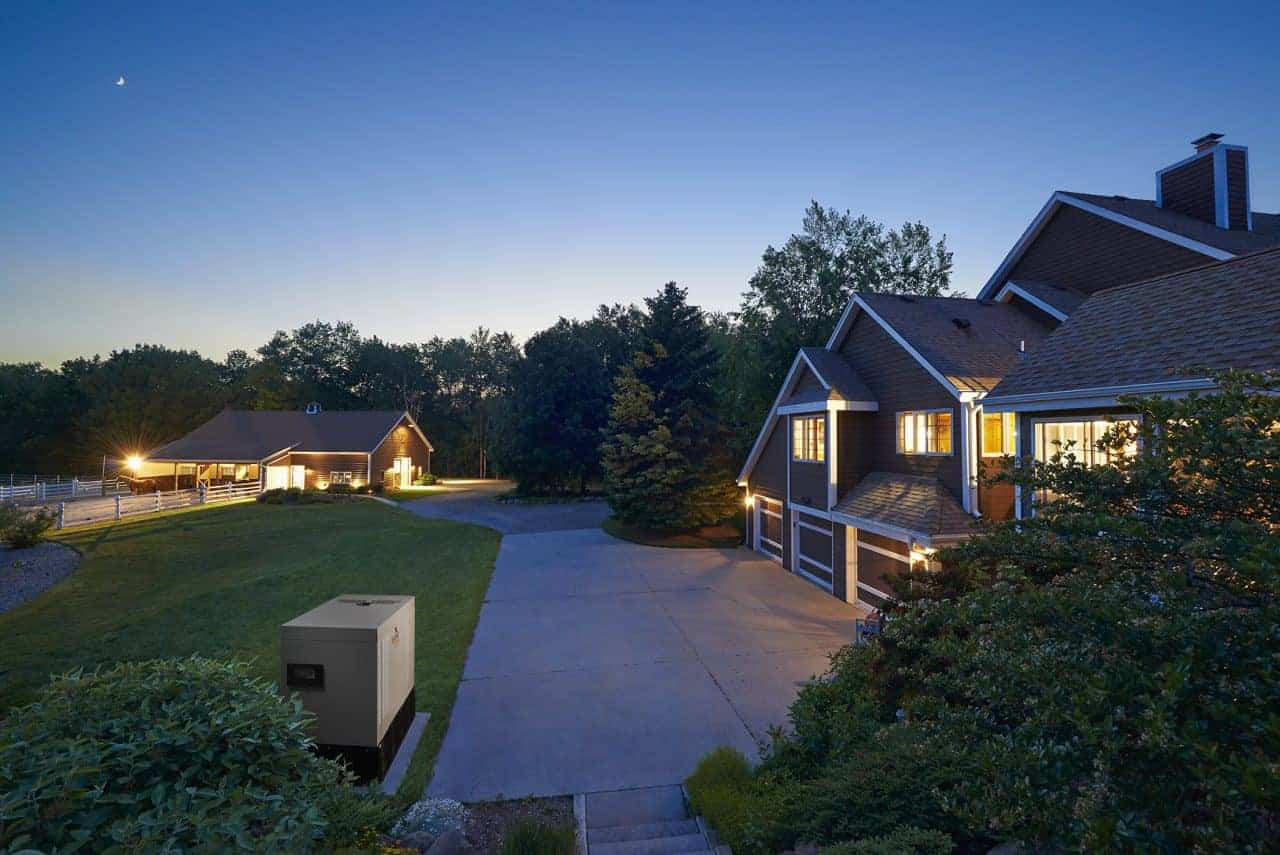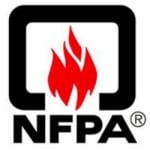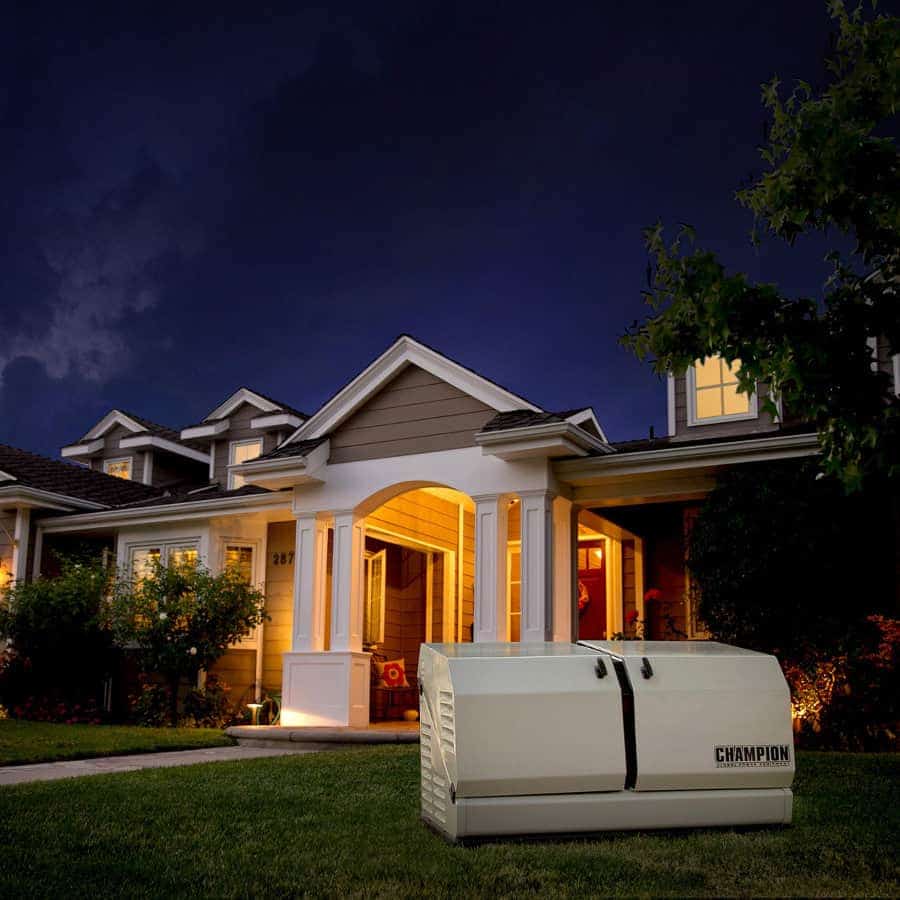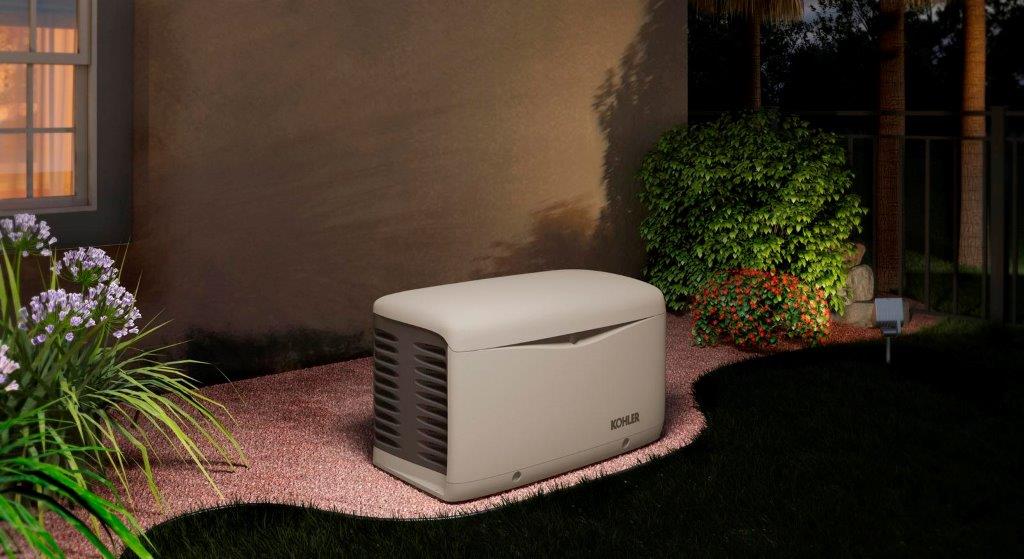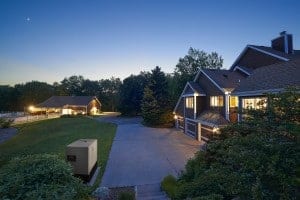
Standby Generator Systems for Large Homes or Properties May Require Two or More Automatic Transfer Switches
Large homes with electrical systems that compliment their size may have special requirements for the installation of a standby generator that extend beyond the unit’s power rating.
Service panels, even those that accommodate the higher current ratings, only have room for a certain number of circuit breakers. A large home with many circuits and many permanently-wired appliances may require two (or more) main service panels, each with a set of circuit breakers to distribute power throughout the house.
National Electrical Code (NEC) states that service entrance equipment must be rated to supply all the devices it serves. The Generator Transfer Switch (ATS) that is a part of every standby generator installation becomes part of the service equipment if it is installed between the meter and the main service panel.
Buyer Guide: Automatic Transfer Switch
Modern Electrical Requirements
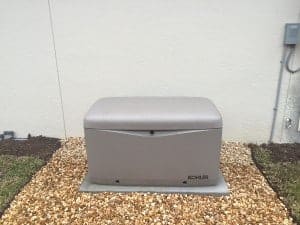
Kohler Standby Generator For Emergency Backup Power
Modern homes have electrical requirements that far exceed what the average home required just twenty or thirty years ago. The minimum service for a new, single-family home is a 100-amp service. Some localities require 125 amps or 150 amps as the minimum.
It is not unusual for a large home to have a hot tub, a pair of furnaces with five-ton air conditioning units, a swimming pool with heaters and pumps, and double ovens with a range top, plus warming drawers. The loads quickly add up to a 300 or 400-amp service entrance requirement.
A service panel rated at 200 amperes has room for 40 single-pole circuit breakers. When more circuits are needed, additional service panels are required. When a service greater than 200 amperes is required, it is common to split the installation equally between two panels. A 300-amp service will have two 150-amp panels, and a 400-amp service will have a pair of 200-amp panels.
Larger installations may have additional main panels and sub panels.
Norwall Power Expert: Guides & Information
Transfer Switch Installation
The National Electric Code allows for different transfer switch installations when a home has more than one service panel.
- A single ATS that meets the combined rating of the main circuit breakers installed in the service panels. For example: Two main panels, each with a 200-amp main breaker, are supplied by a 400-amp ATS.
- One ATS for each main panel, with each ATS meeting the rating of the main circuit breaker in the main panel it supplies. For example: Two main panels, each with a 200-amp main breaker, are supplied by a pair of 200-amp automatic transfer switches.
Additionally,
- The transfer switches must carry a Service Entrance (SE) rating
- or a Service Entrance Disconnect that meets or exceeds the total of the all the main breakers is installed between the ATS units and the electric utility meter. Eg: two, 200-amp panels require a 400-amp main service disconnect.
Home Standby Generator + ATS Installation Guide
Dual ATS Advantages
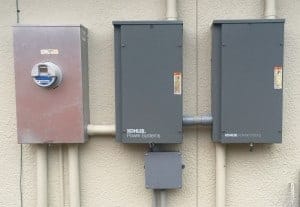
Two Kohler Automatic Transfer Switches Installed to Supply Power for Two Service Panels From One Generator
As the current rating of an ATS increases, so does the cost. Manufacturers offer standby generators bundled with an ATS at a lower cost than purchasing them separately. Adding a second ATS of the same size for the regular price represents a considerable cost saving over the separate costs of a generator and higher-rated ATS.
To illustrate, Norwall’s regular price* for a 22 kilowatt Generac 70432 is $5047 and includes the RXSW200A3 SE-Rated ATS. Add a second RXSW200A3 for $699 and the total purchase is $5746.
The same 22kW Generac 7042 without an ATS costs $4517 but the 400-Amp ATS RTSW400A3 is $2645 for a total purchase price of $7162. The cost difference is $1416—a substantial savings using two transfer switches instead of one.
A dual automatic transfer switch installation does require more space, but the cost advantages outweigh this small disadvantage.
Always check the manufacturer’s recommendation for the most compatible transfer switches.
*Prices as of Februrary 2020. All prices are subject to change without notice.
Briggs & Stratton 20kW with 200-Amp Dual ATS for 400-Amp Split Service
Updated August 3, 2018
Links updated February 13, 2020

